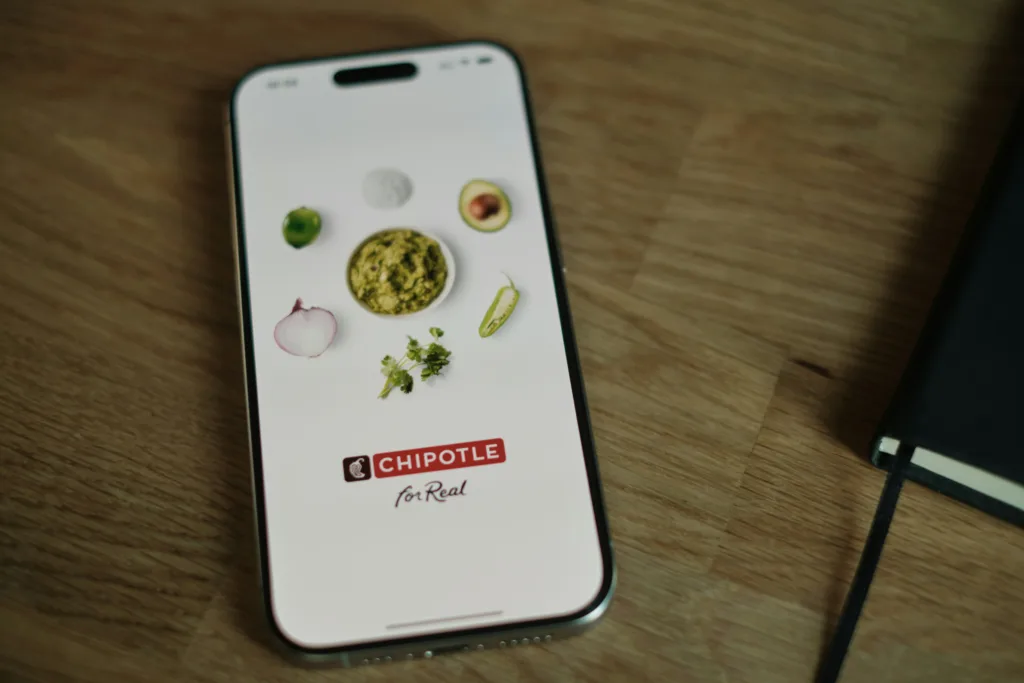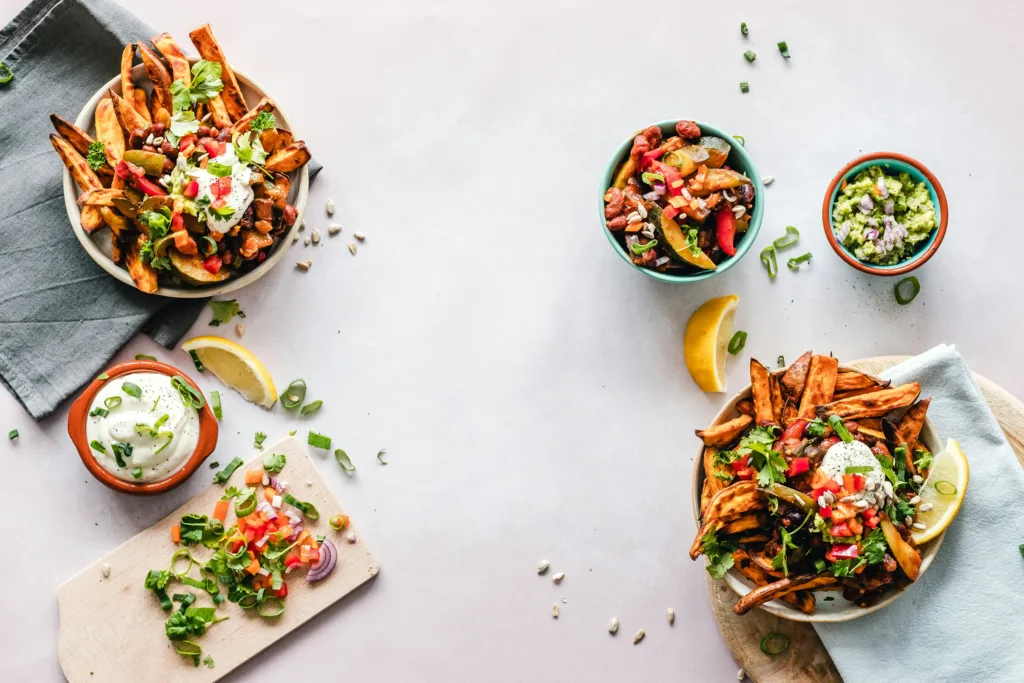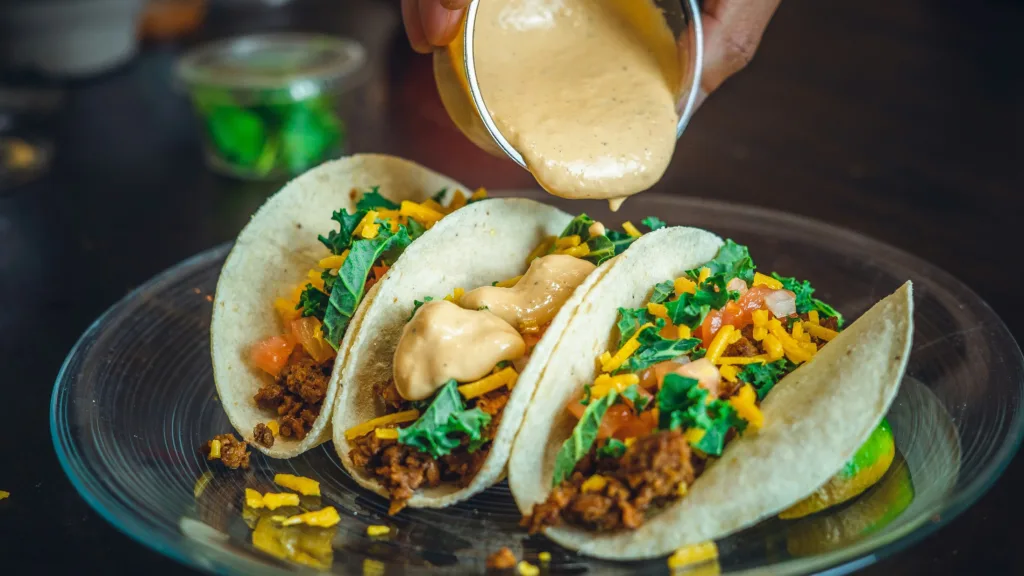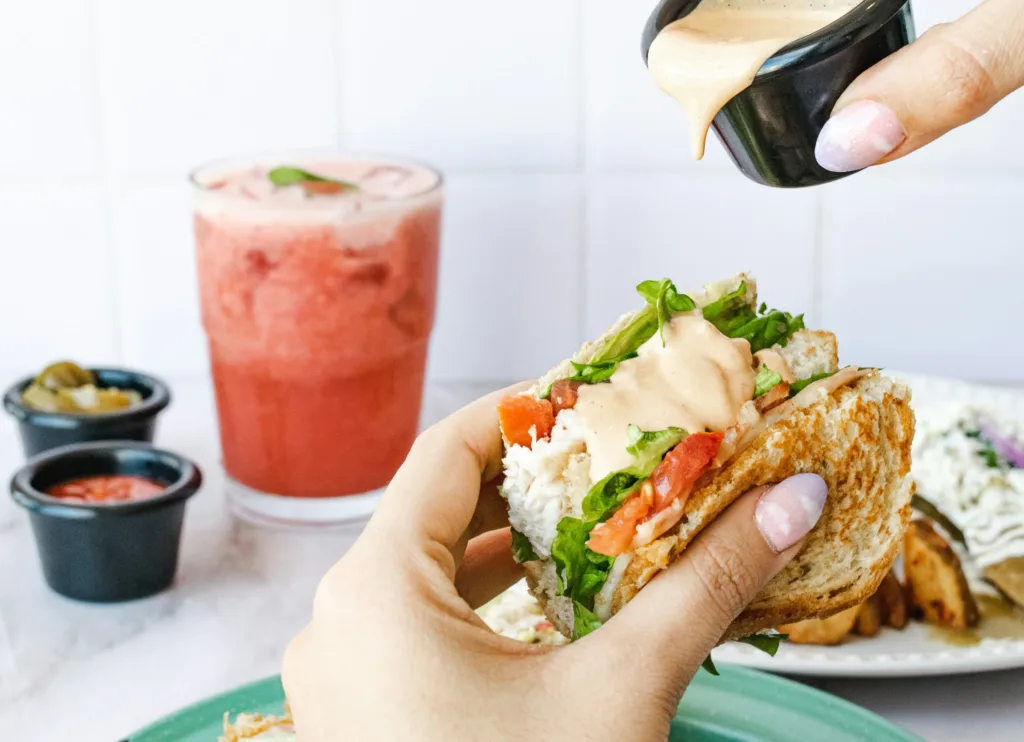It’s easy to assume Chipotle is healthy. It’s got the word “fresh” all over the place, you can see your food being made, and everything just looks better than a typical drive-thru. But here’s the thing: just because it can be healthy doesn’t mean it is, especially if you’re going heavy on the cheese, sour cream, and tortilla chips.
This isn’t a scare-you-away kind of article. It’s a let’s-be-honest-about-it breakdown. Because with the right order, Chipotle actually can be a solid, balanced meal. But without a little strategy, you might be blowing past 1,000 calories before you even grab a fork.
If you’re trying to make smarter choices at places like Chipotle but don’t want to stress over every ingredient, our app ReciMe can help you keep things simple. You can save your usual order in the app and get a full breakdown of calories, protein, carbs, and more without doing any math. It works on iOS, Android, and even as a Chrome extension, so whether you’re planning meals at home or logging something on the fly, ReciMe makes it easier to stay on track without overthinking it.



Chipotle’s Setup: Why Customization Cuts Both Ways
One reason people love Chipotle is the freedom to build a meal exactly how they like it. You walk down the line and pick your base, protein, beans, veggies, sauces, and toppings.
This flexibility is great for staying in control of your nutrition. But it’s also the reason why two people can walk out with meals that look totally different on a nutrition label.
Here’s where it gets tricky:
- The average Chipotle meal ends up being over 1,000 calories
- Many add-ons come with more sodium than you’d expect
- “Healthy” ingredients can still be calorie-dense (looking at you, guac)
So yeah, Chipotle lets you make smart choices. It also lets you pile on everything in sight. Knowing the difference matters.
What’s Actually in a Typical Chipotle Meal?
Let’s break it down. If you go for a burrito with all the common fillings (rice, beans, meat, cheese, sour cream, salsa, guacamole), you’re looking at a big meal. Not just in size, but in nutrition.
A sample breakdown might look like this:
- Flour tortilla: 320 calories
- Chicken: 180 calories
- Brown rice (light portion): 160 calories
- Black beans (half scoop): 65 calories
- Cheese (half scoop): 55 calories
- Sour cream (half scoop): 55 calories
- Tomato salsa: 25 calories
- Guacamole (optional): 230 calories
That’s roughly 740-1180 calories in one burrito. Sodium? Easily over 2,000 milligrams if you don’t skip anything. And that doesn’t even include chips.
Bowl vs Burrito: The 320-Calorie Decision
If you’re trying to lighten things up, the easiest swap is ditching the burrito and going for a bowl. Why? The tortilla alone adds 320 calories and a solid dose of sodium.
Same fillings, different wrapper – or lack of one – and you save room for something else without sacrificing flavor.
Another option? Ask for the tortilla on the side. That way you’re in charge of how much of it you actually eat.
Protein: What’s the Best Choice?
Chipotle has a decent selection of protein options, both meat and plant-based. The good news is they’re all relatively high in protein. The not-so-great news is that they vary a lot in sodium and fat.
Here’s how they stack up (per 4 oz serving):
- Chicken: 180 cal, 32g protein, 310mg sodium
- Steak: 150 cal, 21g protein, 330mg sodium
- Barbacoa: 170 cal, 24g protein, 530mg sodium
- Carnitas: 210 cal, 23g protein, 450mg sodium
- Sofritas (tofu): 150 cal, 8g protein, 560mg sodium
If you’re aiming for lean protein, chicken or steak are strong options. Sofritas are great for plant-based eaters, but watch the sodium. Carnitas and barbacoa taste great, but they tend to be higher in both fat and salt.

The Beans and Rice Situation
Beans are one of the best parts of Chipotle’s menu. They’re filling, packed with fiber, and a solid plant-based protein source. Both black and pinto beans are great choices, and nutritionally they’re nearly identical.
As for rice:
- Brown rice gives you more fiber and less sodium
- White rice is fine, but less filling
- If you’re getting a tortilla or taco shells, you might want to skip rice altogether to keep carbs in check
Toppings That Help (and Hurt)
Not all toppings are created equal. Some give you nutrients and flavor with barely any calories, while others can quietly double your total fat and sodium.
Smart adds:
- Fajita veggies: low in calories, high in flavor
- Romaine lettuce: fiber and crunch for almost zero calories
- Tomatillo green chili salsa: flavorful and lower in sodium than most others
Watch out for:
- Cheese: 110 calories per scoop, mostly from fat
- Sour cream: 110 calories, high in saturated fat
- Guacamole: 230 calories – healthy fats, yes, but still a calorie bomb
- Salad dressing: 220 calories and 850mg of sodium – easy to forget, easy to overdo
If you love these, go for half portions or ask for them on the side. You’ll still get the taste, just not the overload.
What About Chips?
Here’s where things get sneaky. A regular bag of chips adds:
- 540 calories
- 390mg of sodium
Eat them with queso or guac and you’re pushing 800+ calories before even touching your main meal. If you have to get them, share with a friend or skip the queso and dip into your bowl instead.

Sample Orders That Work
Here are a few go-to orders that hit a good balance between flavor, calories, and nutrients:
For a protein boost:
- Bowl with chicken, brown rice (light), black beans, fajita veggies, green chili salsa, and lettuce
- About 550-600 calories, 45+ grams of protein
For low-carb days:
- Salad with steak, fajita veggies, black beans, green salsa, and guac
- Around 500 calories, low in carbs, high in fiber and protein
Plant-based option:
- Bowl with sofritas, brown rice, pinto beans, fajita veggies, corn salsa, lettuce
- Around 600-650 calories, lots of fiber, some sodium to watch

Tips for Building a Healthier Order
If you want to keep things balanced without turning into that person who orders a salad with no dressing and five ice cubes, here are some tips that actually work.
Start with a bowl or salad instead of a burrito. Skipping the tortilla right off the bat cuts a big chunk of calories and sodium without affecting the flavor. When it comes to protein, just stick to one option unless you have a specific reason, like post-workout needs. Doubling up adds more sodium and calories than most people realize.
Beans and veggies are smart additions that add fiber, volume, and a good dose of nutrients. If you’re including rice, try a lighter scoop or skip it altogether if you’re already getting your carbs from other ingredients. The salsas bring a lot of flavor, but they’re not all created equal in terms of sodium. The green tomatillo salsa is the best pick if you’re watching salt intake.
Toppings like cheese and sour cream can sneak up on you calorie-wise. You don’t have to ditch them, but asking for a half portion goes a long way in keeping things in check. And finally, if you really want to stay on top of what you’re eating, use Chipotle’s nutrition calculator before you order. It gives you a clearer picture of what’s actually going into your bowl.
What to Skip (or at Least Rethink)
You don’t have to swear off anything forever, but some items are best saved for occasional splurges:
- Quesadillas and burritos with everything – they’re delicious, but heavy
- Chips and queso – fun to share, not great solo
- Multiple meat servings – doubles your protein but also doubles sodium and calories
- Salad dressing – just use salsa or a squeeze of lime instead

The Sodium Question: Should You Worry?
Even the healthiest Chipotle combos can be high in sodium. A bowl with chicken, beans, salsa, and veggies can easily hit 1,100mg. Add cheese or vinaigrette and you’re over 2,000mg.
If you’re not eating Chipotle every day and keep the rest of your meals lower in salt, you’re probably fine. But if you have high blood pressure or are trying to keep sodium low, build your bowl carefully and maybe skip the chips.
Final Thoughts: So, Is Chipotle Actually Healthy?
It can be. That’s the short answer. But the longer, more useful answer is: it depends entirely on what you order and how much of it you eat. Chipotle gives you the tools to build something balanced, nutrient-dense, and satisfying. It also gives you the option to stack your meal with enough calories and sodium to rival a full day’s worth of food. That’s not a flaw in the menu – it’s just the trade-off of full customization.
The key is being a little more intentional. A burrito every now and then won’t derail anything, but if you’re trying to eat better or track your intake, making small swaps (like skipping the tortilla or going lighter on cheese) can make a noticeable difference. With apps like ReciMe helping you track everything in one place, you don’t have to guess your way through it either.
So no, Chipotle isn’t a health food. But it’s also not your average fast food. And with a bit of planning, it can absolutely fit into the kind of routine where you feel good about what’s on your plate.
FAQ
Is Chipotle really healthier than most fast food places?
Generally, yes, but only if you build your order with some thought. The ingredients are less processed and there’s more fresh produce, but it’s still easy to overdo it if you’re not paying attention to portion size or extras.
What’s the healthiest thing to order?
A bowl with chicken or sofritas, black beans, fajita veggies, brown rice (light portion), and green tomatillo salsa is a solid starting point. It keeps calories and sodium in check while still giving you a good balance of protein, fiber, and flavor.
Can I eat Chipotle and still lose weight?
Yes. As long as your meal fits within your overall calorie goals and you’re mindful of how often you’re eating out, Chipotle can be part of a weight-loss plan. Using ReciMe to calculate your meal ahead of time helps take the guesswork out of it.
What should I avoid if I’m trying to eat healthier at Chipotle?
Try not to stack too many high-calorie toppings at once. Cheese, sour cream, guac, chips, and dressing can easily add up to hundreds of extra calories. You don’t have to skip them entirely, but smaller portions go a long way.
Is it okay to eat Chipotle often?
It depends on your overall diet. If you’re choosing bowls with lots of vegetables and lean protein, it’s fine to include Chipotle regularly. Just keep an eye on sodium and be realistic about portion sizes, especially if you’re pairing it with other meals out during the week.
